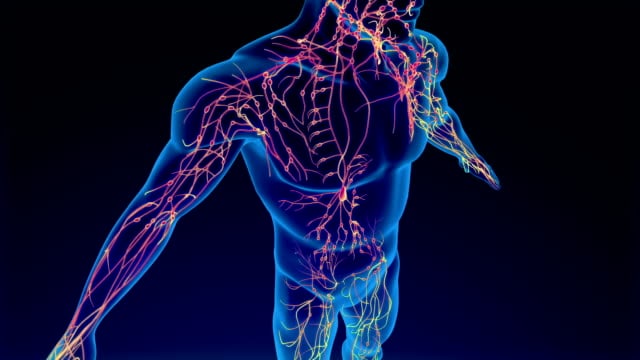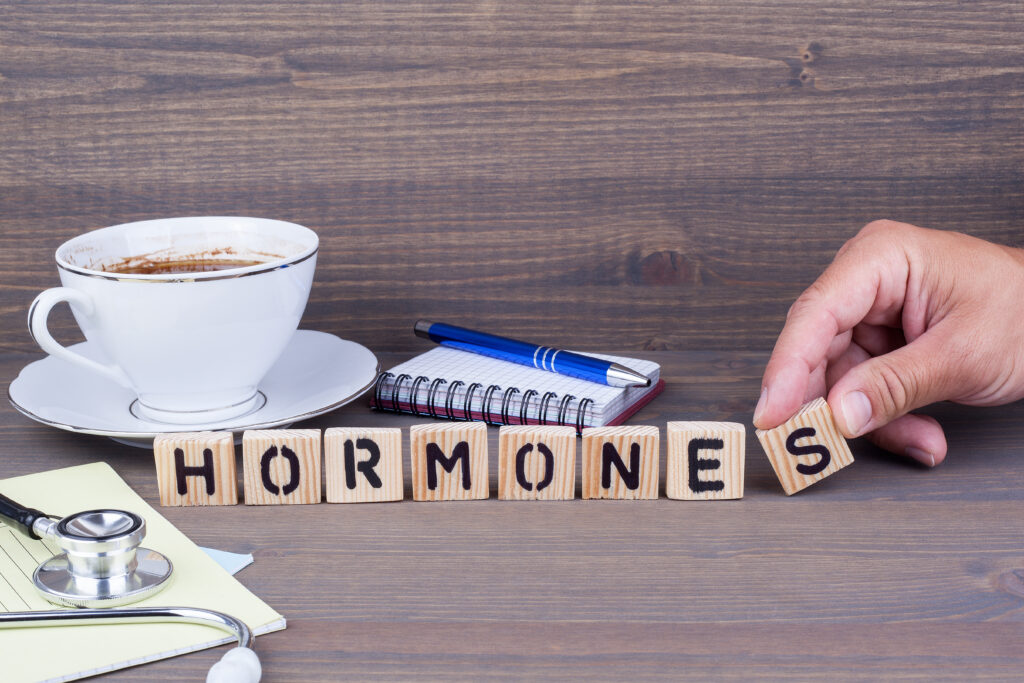Blood cancer awareness month continues in September and here we are with the second instalment of our two-part series, this time all about Lymphoma. Since its launch in 2004 World Lymphoma Awareness Day (WLAD) has been increasing awareness of lymphoma among doctors, nurses, patients and their families to provide them with information about how the lymphatic system works and symptoms associated with lymphoma disease.
What is Lymphoma?
Lymphoma is the term used to talk about blood cancers that find their origins in the lymphatic system. You have many nodes throughout your body that are connected via a network of lymph vessels; lymph fluid passes through them. The lymphatic system is part of the body’s immune system, and it helps us fight infections and diseases (Macmillan Cancer Support, 2018).
There are two main types of lymphoma cancer – Hodgkin lymphoma (HL) and non-Hodgkin lymphoma (NHL). Many patients can keep their disease under control and still have a good quality of life through treatment. Persistent medical innovation continues to give hope to patients.
What is Hodgkin lymphoma?
Hodgkin lymphoma is an uncommon cancer that develops in the lymphatic system. It develops when B-lymphocytes that are found within the lymphatic system begin to multiply abnormally and collect in certain parts of the lymphatic system like the lymph nodes.
The lymphocytes that are affected by this lose the properties that make them suited for fighting infections, which in turn makes you more vulnerable to viruses and bacteria. Hodgkin lymphoma is marked by the presence of Reed-Sternberg cells that can be identified using a microscope.
Symptoms of Hodgkin lymphoma
Some common symptoms of this disease are (NHS, 2018b):
- Painless swelling in a lymph node (usually in the neck, armpit, or groin)
- Night sweats
- Unintentional weight loss
- Higher temperature
- Persistent itching of the skin
Who is more at risk of Hodgkin lymphoma?
In the UK there are around 2,100 new cases of Hodgkin lymphoma per year (NHS, 2018). Over time, the trend shows that incidence rates of developing Hodgkin lymphoma have increased by 36% since the 1990s.
When it comes to age, incidences of Hodgkin lymphoma show a clear bimodal distribution. The first peak of increased incidence occurs in young adults aged 20-24. The second peak occurs later in life in adults aged 70-80 years old. This disease is more common among males of all ages (NHS, 2021).
Future predictions show that incidence rates of Hodgkin lymphoma may rise by 5% between 2014 and 2035, with an even bigger increase in incidence rates among males.
What is non-Hodgkin lymphoma?
Non-Hodgkin lymphoma (NHL) shares many similarities with Hodgkin lymphoma. To differentiate between them identifying the lymphocyte that is affected and starts to behave abnormally is key. There are also no Reed-Sternberg cells present in non-Hodgkin lymphoma.
Another difference between those two diseases is that NHL may affect the lymph nodes all over your body whereas HL is usually found in the upper body (Moffit Cancer Center, 2018).
As with the former disease, non-Hodgkin lymphoma manifests through the same symptoms – swollen lymph nodes, abdominal pain, fatigue, high temperature, night sweats and unintentional weight loss.
Who is more at risk of non-Hodgkin lymphoma?
Unfortunately, non-Hodgkin lymphoma is more prevalent in patients aged 55 and over.
According to Cancer Research UK, age-specific incidence rates of non-Hodgkin lymphoma rise steadily among adults aged 45-49 and very steeply among those aged 55-74.
Males are more at risk of developing non-Hodgkin lymphoma, however, the combined incidence rate among males and females has risen by 38% between 1993-1995 and 2016-2018 (Cancer Research UK, 2021a).
How to diagnose lymphoma?
If you notice any potential symptoms or are experiencing swollen glands speak to a healthcare provider. There, you may be referred to a hospital by your health practitioner. In this case, a biopsy will usually be carried out as that is the only way to confirm a diagnosis of Hodgkin or non-Hodgkin lymphoma.
Should the biopsy confirm that you have a form of lymphoma cancer, further testing may be done to check how far the disease has spread. This would help your doctor determine the stage of the lymphoma and provide you with the best treatment options.
Some of the tests that they could do are as follows (NHS, 2018a):
Blood tests: Samples of blood are taken to look at general health. It would check for levels of red and white blood cells in your blood as well as platelets. It would also check how well the liver and kidneys are functioning.
CT scan: This scan takes a series of x-ray images of your body to build up a 3D picture of the inside of the body. The level of detail produced through this scan can show the spread of cancer and spot any other abnormalities that could develop.
MRI scan: The MRI scan uses magnetic fields to look inside your body as well, but it is better suited for soft tissue. It performs the same function as a CT scan.
Echelon Health Preventive Health Assessments
Core Cancer
Non-Hodgkin lymphoma is a treatable and curable disease in many cases if caught early. Some things that you can do to reduce the risk of developing either of these diseases are:
- Avoid behaviours that increase the chance of getting immune weakening diseases such as AIDS or hepatitis C
- Maintain a healthy weight through exercise and diet
- Avoid unnecessary exposure to radiation
However, this is quite generic advice. At Echelon Health we provide world-class health assessments that detect up to 94% of preventable diseases that lead to premature death in men and women including blood cancers like lymphoma.
Our Core Cancer Assessment was created to detect the highest risk cancers at their earliest possible stage. It screens for cancers such as breast, prostate, colon, pancreatic, liver, thyroid and more. It also screens for blood cancers.
The list of tests performed during the Core Cancer assessment is as follows:
- CT Abdomen
- CT Pelvis
- CT Virtual Colonoscopy
- MRI Prostate
- Ultrasound Thyroid
- Ultrasound Testes/ Ovaries
- Digital Mammogram
- Blood tests
The blood tests themselves are very comprehensive and check over 40 parameters including:
| Disease Detection | Test |
| Anaemia | Full Blood Count |
| Infection | Full Blood Count |
| Clotting Disorders | Platelet Count |
| Iron Deficiency | Iron Levels |
| Kidney Failure | Renal Function |
| Salt Disturbances | Electrolytes |
| Liver Disease | Liver Function Tests |
| Alcohol Damage/Excess | Gamma Glutemyl Transference |
| High Cholesterol | Total HDL, LDL Cholesterol |
| Vitamin D Deficiency | Vitamin D |
| Hypogonadism (Men only) | Testosterone, Luteinising Hormone (LH), Follicle Stimulating Hormones (FSH) |
| Diabetes | Glucose & Glycosylated Haemoglobin |
| Under / Over Active Thyroid | Thyroid Function Tests |
| Breast and Ovarian Cancer (Women only) | CA 19-9, CEA Tumor Markers |
| Prostate Cancer (Men only) | PSA |
| Leukaemia | Full Blood Count & ESR |
| Lymphoma | Full Blood Count & ESR |
| Myeloma | Full Blood Count & ESR |
This covers most issues even beyond potential cancer diagnoses including diabetes, thyroid issues, and functionality of several organs.
However, if you are looking for a full head-to-toe check, Echelon Health also offers the Platinum Assessment package. The Platinum Assessment combines the talent of our doctors, nurses, and radiologists with the most advanced, cutting-edge medical scanning technology. We believe this is the most advanced health assessment available worldwide today.
If you would like to find your peace of mind, contact us today! Don’t forget to download our brochure to read more about the Core Cancer health assessment and our other packages.
Sources:
Macmillan Cancer Support (2018). The Lymphatic System. Available at: https://www.macmillan.org.uk/cancer-information-and-support/worried-about-cancer/the-lymphatic-system (Accessed 21/10/2021).
NHS (2018). Overview: Hodgkin lymphoma. Available at: https://www.nhs.uk/conditions/hodgkin-lymphoma/ (Accessed 21/10/2021).
Cancer Research UK (2021). Hodgkin lymphoma incidence statistics. Available at: https://www.cancerresearchuk.org/health-professional/cancer-statistics/statistics-by-cancer-type/hodgkin-lymphoma/incidence#heading-Two (Accessed 21/10/2021).
Moffit Cancer Center (2018). Differences Between Hodgkin & Non-Hodgkin Lymphoma. Available at: https://moffitt.org/cancers/lymphomas-hodgkin-and-non-hodgkin/faqs/hodgkin-lymphoma-vs-non-hodgkin-lymphoma/ (Accessed 21/10/2021).
Cancer Research UK (2021)a. Non-Hodgkin lymphoma incidence statistics. Available at: https://www.cancerresearchuk.org/health-professional/cancer-statistics/statistics-by-cancer-type/non-hodgkin-lymphoma/incidence#heading-One (Accessed 21/10/2021).
NHS (2018)a. Diagnosis: Hodgkin lymphoma. Available at: https://www.nhs.uk/conditions/hodgkin-lymphoma/diagnosis/ (Accessed 21/10/2021).
NHS (2018)b. Symptoms: Hodgkin Lymphoma. Available at: https://www.nhs.uk/conditions/hodgkin-lymphoma/symptoms/ (Accessed 21/10/2021).



